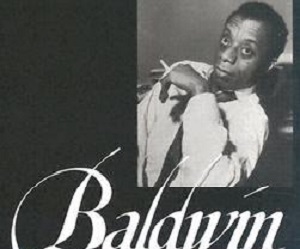 This is part 2 of Benjamin Rybeck’s coverage of the Best Adapted Screenplay nominees at the 86th Academy Awards. Full spoilers follow.
This is part 2 of Benjamin Rybeck’s coverage of the Best Adapted Screenplay nominees at the 86th Academy Awards. Full spoilers follow.
The films of Oscar season often generate controversy—or rather, Oscar bloggers and bored film critics generate controversy, sometimes hysterically and pointlessly. This year, one such controversy regarded The Wolf of Wall Street, the adaptation of ex-stockbroker Jordan Belfort’s 2007 memoir, in which he details his drug addiction, his sexual proclivities, and, in general, the excesses of his wealth (which he mostly gained illegally).
Essentially, the controversy concerned how director Martin Scorsese and writer Terence Winter present the bacchanalian lifestyle of Belfort and his cronies. Is their film, as David Denby writes, “made in such an exultant style that it becomes an example of disgusting, obscene filmmaking”? In other words, does it sufficiently condemn the behavior of Jordan Belfort, or does it—perhaps accidentally—celebrate it?
Sure, The Wolf of Wall Street invites you to experience the world through Belfort’s eyes, all the criminality-induced adrenaline rushes and sexual escapades included. I suppose it’s possible for a critic to think the film celebrates an aggressively masculine, misogynistic mindset, especially with all those beautiful people hanging around. But to my mind, this analysis demonstrates a failure to read anything other than titillation (forget about nuance) in images of naked young women, and plenty of female writers—among them Sara Benincasa (http://jezebel.com/a-ladys-defense-of-the-wolf-of-wall-street-1492397853), Helen O’Hara (http://www.empireonline.com/empireblogs/empire-states/post/p1442), and Sasha Stone (http://www.awardsdaily.com/blog/wolf-and-the-presumed-accusations-of-misogyny/)—find Belfort’s behavior toward women so self-evidently disgusting that any scene explicitly condemning said behavior would be tautological. (In fairness, many critics—like Michael Phillips, Tasha Robinson, and Dana Stevens—dislike the film not for its perceived moral failings, but for being merely dull and repetitive, which is a different matter.)
Critics who accuse The Wolf of Wall Street of never condemning Belfort do so by willfully ignoring the film’s last third, especially the scene in which Belfort rapes and beats his wife, and then tears open a couch like an animal to get at the cocaine hidden within. Look at how Scorsese visualizes that brutal sequence: The camera, which has previously distorted the world to reflect Belfort’s rapacious experience of it, settles into long, steady shots, asking us to simply watch this man (including a wide shot of Belfort as he snorts his cocaine, and the tracking shot of Belfort trying to kidnap his own child). For this sequence, we leave his point of view. The film stops being subjective and becomes objective. We see exactly what Scorsese thinks about his protagonist.
Of course, Belfort’s memoir never reaches this level of objectivity. He has written The Wolf of Wall Street as an addiction narrative; to his mind, the drugs were to blame, and after hitting rock bottom and overdosing, he struggles through rehab. For me, that aspect of the book is off-limits: I don’t doubt Belfort’s sincerity when it comes to getting clean, and I refuse to contribute to our culture’s notion that drug addicts deserve sympathy only conditionally.
But corporate culture—not addiction and redemption—is the film’s real interest. Remember the scene when Belfort, forced by the government to leave his company, Stratton Oakmont, gives a goodbye speech to his employees only to, in the middle of it, pump himself up into sticking around, legal ramifications be damned? Terence Winter invented that moment in his screenplay. The memoir shows Belfort leaving Stratton on page 280 and spending the rest of the book in the freefall of substance abuse. This means that many of the film’s major moments—the Lemmon Quaaludes, the shipwreck, the arrest—happen, in the memoir, without the added tension of Belfort trying to run his company. This makes Belfort’s book feel static in ways the film doesn’t.
When Belfort does focus on Stratton, he wants the reader to know how smart he is. He’s gifted at the corrupt parts of his job—he understands and references esoteric financial law—and comes across as a sort of evil genius. The film, however, robs Belfort of this intelligence. It never describes the criminal schemes—in fact, it dismisses the details of them as unimportant. As played by Leonardo DiCaprio, Belfort may be charismatic, sure. But he’s a buffoon.
The Belfort of the film is far viler than the Belfort of the memoir. Consider the matter of Belfort’s cooperation with the FBI—in short, his betrayal of his friends: The memoir mentions it in passing, but the film makes it a major third-act engine. Or consider the aforementioned scene of domestic abuse: In the memoir, it ends with Belfort’s wife embracing him and saying, “I love you.” The real Belfort claims remorse for his crimes, whereas Winter gives him this chilling final piece of narration: “when we arrived to prison, I was absolutely terrified. I needn’t have been. For a brief, fleeting moment, I’d forgotten I was rich and lived in America.”
Scorsese’s best films have always embodied flawed points of view, first nudging us toward identification, and then shocking us with monstrosity. He leaves us dazed and trying to figure out not so much what he revealed about his subject, but rather what he revealed about us. And Winter, as a writer for The Sopranos and the creator of Boardwalk Empire, has been charting the discomforts of viewer identification with charismatic monsters for a decade.
In other words, Scorsese and Winter have very clear ideas about Jordan Belfort and his lifestyle. The real question is, do you?







